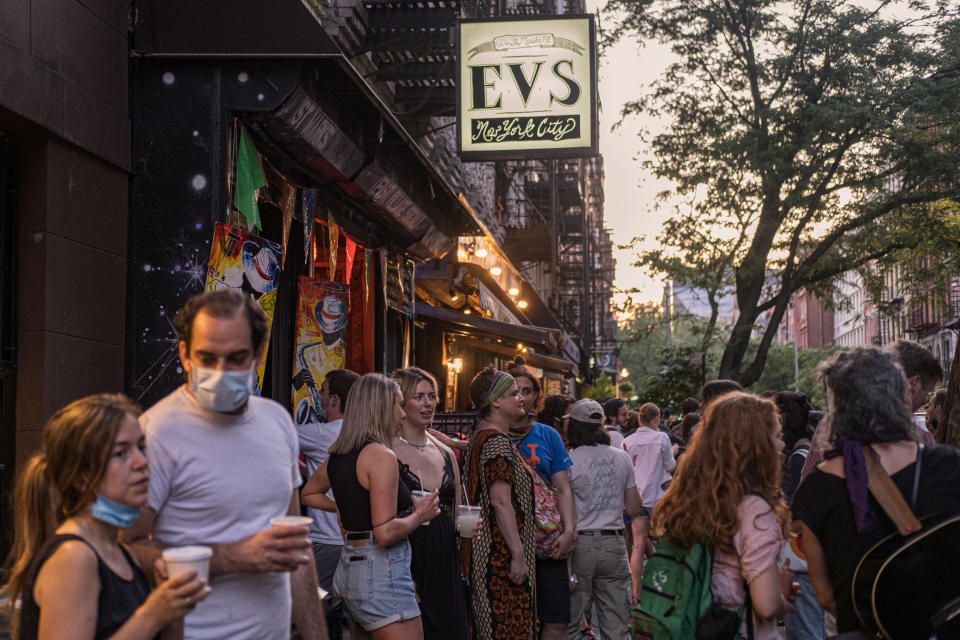Young people may be driving the COVID-19 pandemic, CDC says
Although older adults remain at the highest risk of contracting COVID-19, a new report from the Centers for Disease Control and Prevention suggests that young people may still be driving the pandemic — bolstering decisions like that of Boulder, Colo., officials to temporarily halt gatherings among 18- to 22-year-olds.
The study, which analyzed data from all 50 states and the District of Columbia, found 20 percent of COVID-19 cases between March and August in the U.S. were among 20- to 29-year-olds, a higher percentage than any other age group. The report also revealed a drop in the median age of those infected with the virus, from 46 in May to 38 in August.

Equally telling was the researchers revealing that a rise in COVID-19 cases among young people often preceded an outbreak in older adults. The trend was most evident in the Southeast, where an influx of cases among 20- to 29-year-olds was seen nine days prior to an outbreak in that region among adults ages 40 to 59. Florida, Arizona, Texas and Louisiana all experienced major surges in the coronavirus during the summer, some of which were attributed to bars and fraternity rush parties. Dozens of colleges and universities are currently battling outbreaks.
Unlike many aspects of this pandemic, the development doesn’t seem unique to the U.S. The authors note a “similar age shift” in Europe during this time frame, with the median age of COVID-19 dropping from 54 from January through May to 39 in June and July. During the latter two months, nearly 20 percent of cases were among 20- to 29-year-olds — a number that, similar to the U.S., made up the biggest proportion of overall cases.
Dr. Amesh Adalja, an infectious disease expert and senior scholar at the Johns Hopkins University Center for Health Security, says it’s not surprising to hear that young people are experiencing the virus in high numbers. “We have seen the changing demographic in the infections, and it’s not just because we have the ability to test young people,” Adalja tells Yahoo Life. “But younger people are much more likely to be risk-tolerant.”
The phrase means exactly what it implies — that younger people are more inclined to engage in risky behavior. “They’re more willing to assume risks,” says Adalja. “There’s a lot of data showing this. If you look at bungee-jumping deaths, I don’t think you’ll find 80-year-olds in that group.” Older people, he says, are more likely to remain cautious in the face of danger.
The idea that young people may be somehow immune to the virus, Adalja says, may also be fueling this behavior. During a briefing in late June, Dr. Jay C. Butler, the CDC’s deputy director of infectious diseases, attempted to quash this thinking. “[Get] the message out that young people are not somehow naturally immune to this virus,” Butler said at the time. “Although they may be at lower risk of death or severe infection, [that] doesn’t mean that they are completely unable to become infected or to transmit it to others.”
Adalja agrees, saying that while young people are less likely to be hospitalized, they are not “completely impervious” to the virus. Individuals with comorbidities — such as asthma — are still at risk of severe illness, and people as young as 26 have reported being COVID-19 “long-haulers” — individuals who experience side effects from the virus months after recovering.
“It’s not always a complete benign issue with younger people,” says Adalja. “But in general, it tends to be so, and that’s part of why there’s more risk tolerance in the younger age groups.”
The CDC, in its conclusion, notes that the results should be used to guide public health recommendations moving forward. “Emphasis should be placed on targeted mitigation strategies to reduce infection and transmission among younger adults,” the authors write. Among their recommendations for preventing further outbreaks are “age-appropriate prevention messages, restricting in-person gatherings and events, recommending mask use and social distancing in settings where persons socialize.”
Adalja says better surveillance methods may be even more useful. “The answer is more testing,” he says. “All of these stay-at-home orders, the answer to them is get more testing so that people know their status so you don’t have people who are infected going out and about.”
For the latest coronavirus news and updates, follow along at https://news.yahoo.com/coronavirus. According to experts, people over 60 and those who are immunocompromised continue to be the most at risk. If you have questions, please reference the CDC’s and WHO’s resource guides.
How to maintain your physical and mental health during the pandemic
Taking care of a loved one with COVID-19? Here’s how to stay healthy
Q&A with Dr. Kavita Patel: How to keep your family safe and maintain your mental health
Read more from Yahoo Life
Black, Hispanic and indigenous people make up more than 75 percent of COVID-19 deaths under 21
Vitamin B could help prevent the 'worst outcomes' in COVID-19 cases, experts say
Want lifestyle and wellness news delivered to your inbox? Sign up here for Yahoo Life’s newsletter.

